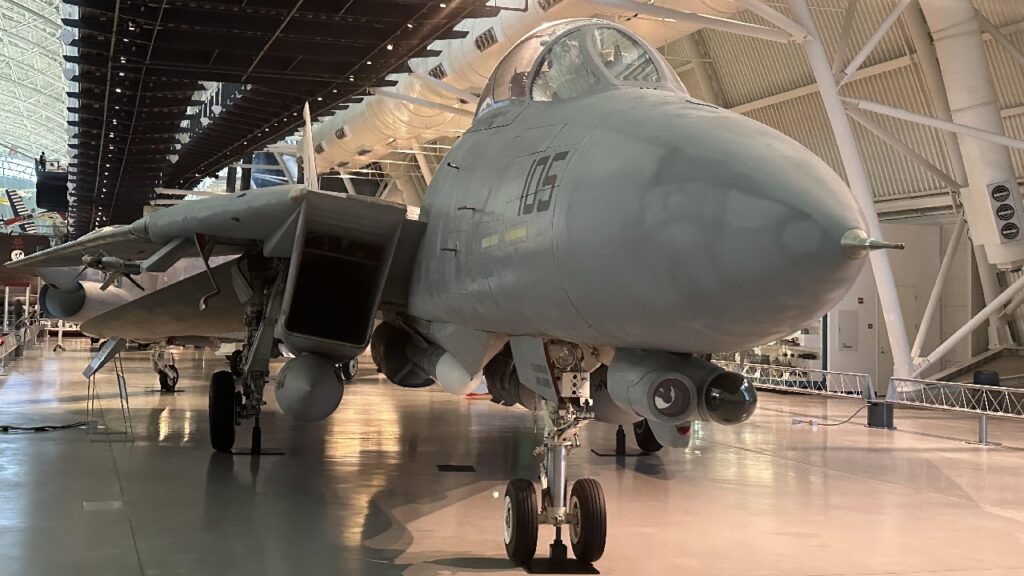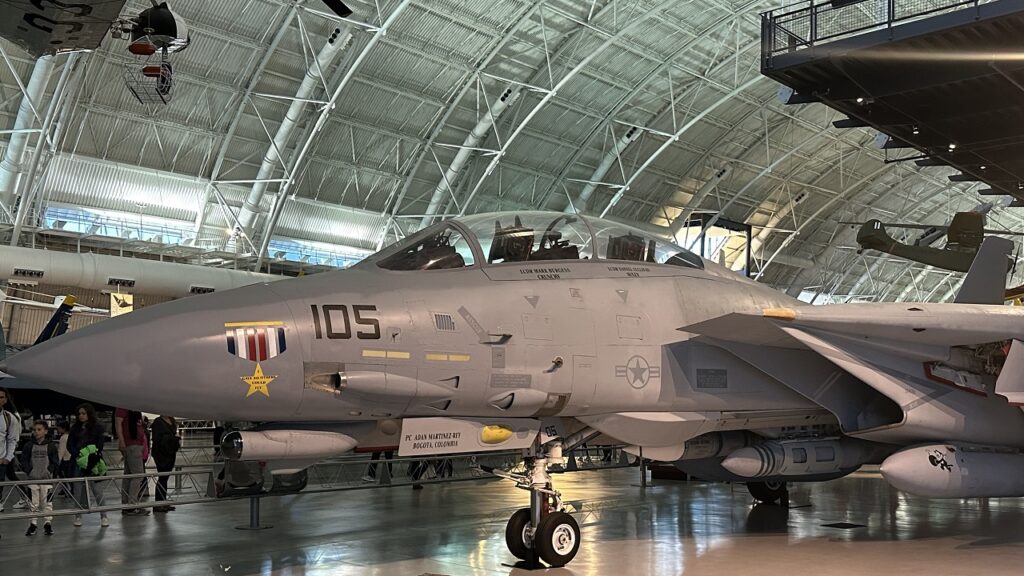𝙁-14 𝙏𝙤𝙢𝙘𝙖𝙩: 𝘿𝙞𝙙 𝙏𝙝𝙚 𝙉𝙖𝙫𝙮 𝙈𝙖𝙠𝙚 𝘼 𝘽𝙖𝙙 𝘾𝙖𝙡𝙡 𝙍𝙚𝙩𝙞𝙧𝙞𝙣𝙜 𝙏𝙝𝙞𝙨 𝙁𝙞𝙜𝙝𝙩𝙚𝙧?
Despite some arguments to the contrary, it seems the Navy may have been well-advised to retire the F-14 and clear the way more fully to where things are now with F-22s and F-35s controlling drones and 6th-generation aircraft already in the air.
Maverick and Goose made the F-14 Tomcat famous as a cultural emblem of US military air power, yet the Pentagon’s decision to ultimately retire the 1980s-era aircraft appears to be sound and well-placed as a way to adapt to a fast-changing air-threat environment.
F-14 History and the Future
The concept of a two-man crew is designed to bring several key advantages, such as the simple fact of adding another set of eyes. An aviator can of course help with command and control, targeting, surveillance and even threat identification, with the idea of freeing up the pilot for other pressing, time-sensitive tasks.
Reducing a crew to one or even no pilots reduces weight, drag and the possibility of human error. Of course, human pilots are not likely to disappear soon given those unique, critical faculties particular to the human mind, yet computer advances have arguably outpaced the advantages of using a two-man crew.
Therefore, despite Top Gun fame and an illustrious history, technological progress has arguably rendered the concept of a two-man crew obsolete. The reason is both clear and simple, the advent of AI-enabled, high-speed computers can quickly gather, organize and transmit vast amounts of otherwise disparate pools or streams of data, quickly presenting an integrated picture of pilots.
This means key procedural functions such as altitude, navigation, aircraft maintenance, speed and time-sensitive variables such as targeting data, threat identification and EW systems can to a large extent be completed without a need for human intervention.
Essentially, machines can naturally perform certain critical, time sensitive combat functions exponentially faster than humans. New incoming sensor data is bounced off a vast database for comparison, reference, organization and analysis and then sent or presented to a human decision maker in position to make quick, time-sensitive decisions in combat.
In fact, advanced AI-enabled algorithms are so sophisticated that they have even out-performed humans in some simulated dogfighting exercises. High-speed computers can instantly assess a large number of key interwoven variables, perform analysis and recommend optimal courses of action for pilots. The idea is to get inside of or ahead of an enemy’s decision-making process to prevail in any air-combat engagement.
What much of this points to is the growing consensus among military scientists, weapons developers and innovators that the optimal approach to real-time, high-speed combat includes a blending of man and machine. Often referred to as human-machine interface, the idea is to use high-speed computing to ease the cognitive burden upon a pilot while enabling him or her to use those key faculties unique to human cognition and decision-making. Certainly, there are many things specific to human perception, consciousness, intuition, emotion or dynamic decision-making that computers simply cannot replicate. Therefore, combat decision-making is best served through a manned-unmanned teaming approach. This way, the best of each is leveraged to maximize any combat advantage.
With this in mind, the US Air Force is not only networking drones to fighter jets in combat but also testing fighter jet dogfighting ability with a human pilot supported by a machine or AI-enabled co-pilot.
In 2020, an AI-enabled computer algorithm operated on board a military aircraft while in flight, coordinating navigational details, sensor information and reconnaissance missions alongside a human pilot. The AI algorithm, called ARTUu, flew along with a human pilot on a U-2 Dragon Lady spy plane, performing tasks that would “otherwise be done by a pilot,” an Air Force report from 2020 explained.
This experiment proved successful and is something which continues to inform Air Force air-combat technology development. The concept of operations with this is simply that a machine can calculate those things machines do best at unprecedented speeds while humans exercise those elements of judgment and perceptions computers are unable to replicate.
Ultimately, what the rapid maturation of these technologies seems to suggest is that pairing a human pilot and a computer might be much more advantageous than having a two-man crew, particularly given that so many aircraft and fighters can already fly unmanned with growing degrees of autonomy.
Therefore, despite some arguments to the contrary, it seems the Navy may have been well-advised to retire the F-14 and clear the way more fully to where things are now with F-22s and F-35s controlling drones and 6th-generation aircraft already in the air.